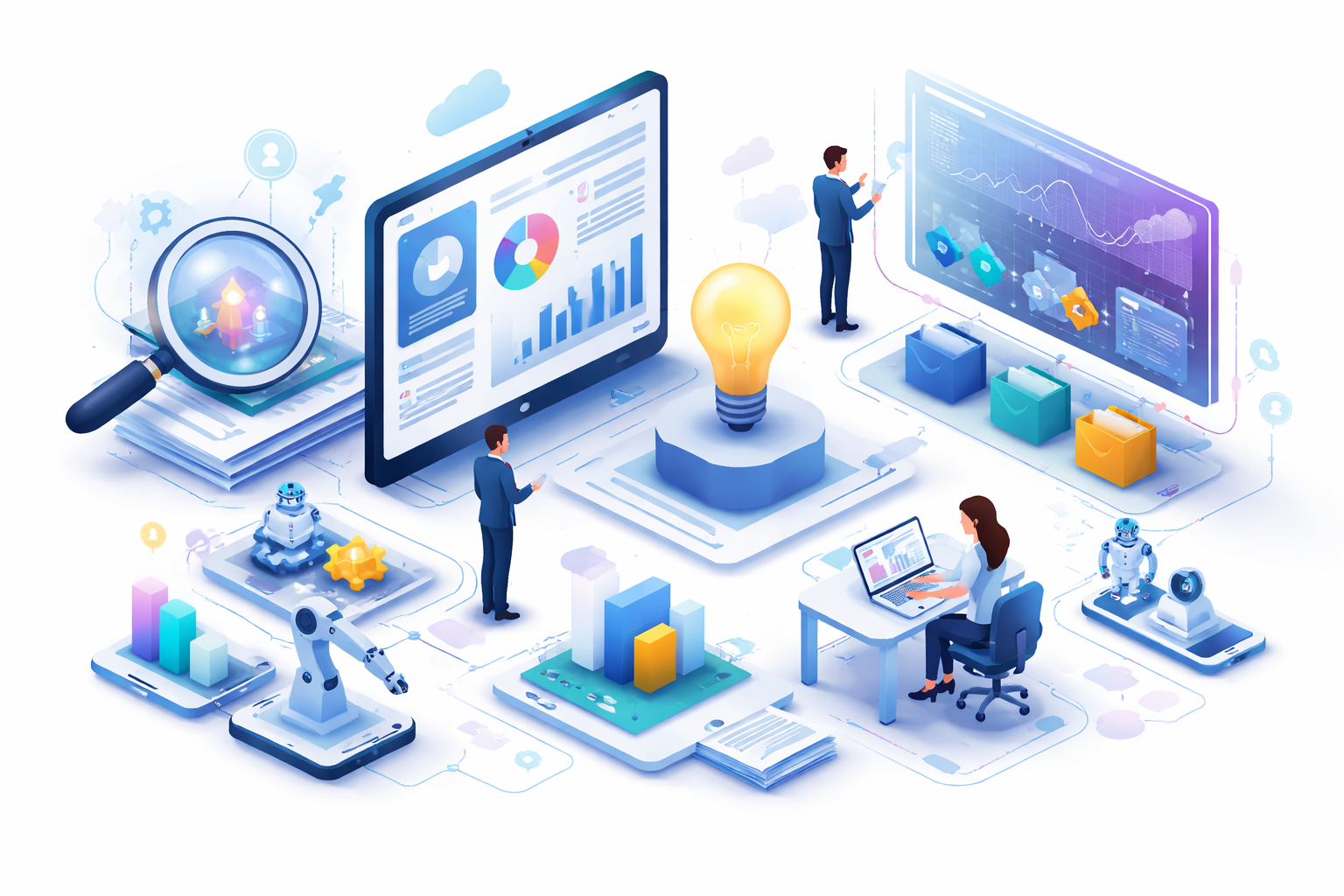Emerging technologies have the potential to transform industries, create new products and services, and solve complex problems. Understanding the basics of these technologies can help you to identify opportunities for innovation and potential areas of disruption. It can also help you to collaborate and work with others to develop new solutions that can benefit your business and society. With so much information available, it's easy to get overwhelmed and confused. However, it's essential to have a basic understanding of these technologies.
At Traction Technology we are obsessed with these technologies and how to apply them to our customers hardest problems:
- Artificial Intelligence (AI) and Machine Learning: AI and machine learning are technologies that enable machines to learn from data and improve over time without being explicitly programmed. Use cases include personalized customer experiences, predictive maintenance in manufacturing, and fraud detection in financial services.
- OpenAI: OpenAI is an artificial intelligence research laboratory consisting of the for-profit corporation OpenAI LP and its parent company, the non-profit OpenAI Inc. It is focused on creating and promoting AI that benefits humanity. Use cases include natural language processing, robotics, and game playing.
- 5G Technology: 5G technology is the fifth generation of wireless technology, offering faster internet speeds and lower latency than previous generations. Use cases include smart cities, autonomous vehicles, and remote healthcare.
- Internet of Things (IoT): IoT connects everyday devices to the internet, allowing for greater automation and control of everything from home appliances to industrial equipment. Use cases include smart homes, logistics, and manufacturing.
- Augmented Reality (AR) and Virtual Reality (VR): AR and VR technologies are changing the way we interact with the world, with applications in gaming, entertainment, education, and even remote work and collaboration. Use cases include virtual product demonstrations, remote maintenance, and employee training.
- Blockchain: Blockchain is a decentralized digital ledger that is secure and transparent. It is being adopted in industries such as finance, supply chain management, and healthcare to enhance security, reduce fraud, and streamline processes.
- Quantum Computing: Quantum computing promises to be exponentially faster and more powerful than traditional computing, opening up new possibilities in areas such as cryptography, drug discovery, and artificial intelligence.
- Cybersecurity: As cyber threats become more sophisticated, cybersecurity has become a critical area of focus for many organizations. From protecting personal data to safeguarding critical infrastructure, cybersecurity is an essential technology trend.
- Edge Computing: Edge computing is a new model of computing that allows data to be processed at the edge of the network, closer to the source of the data, improving processing speed and reducing network latency.
- Biometric Authentication: Biometric authentication, including facial recognition and fingerprint scanning, is becoming more widely adopted in industries such as banking, healthcare, and security, providing a more secure and convenient method of authentication.
- Metaverse: The metaverse is a collective virtual shared space, created by the convergence of multiple virtual worlds and augmented reality experiences. It is expected to be used in gaming, entertainment, and social networking.
- Carbon Capture: Carbon capture is the process of removing carbon dioxide from the air or flue gas, to reduce greenhouse gas emissions. It has potential applications in energy production, industrial processes, and transportation.
- Microfluidics: Microfluidics is the study and manipulation of fluids at the microscale. It has applications in healthcare, chemical synthesis, and environmental monitoring.
- Additive Manufacturing: Additive manufacturing, also known as 3D printing, is the process of creating physical objects from digital designs. It is being used in industries such as aerospace, automotive, and healthcare to create complex parts and structures with greater efficiency and precision
- Natural Language Processing (NLP): NLP is a branch of AI that focuses on enabling machines to understand and interpret human language. It is being used in applications such as virtual assistants, chatbots, and sentiment analysis.
- Robotic Process Automation (RPA): RPA is a technology that automates repetitive and rule-based tasks by using software robots. It is being used in industries such as finance, healthcare, and logistics to improve efficiency and reduce errors.
- Autonomous Vehicles: Autonomous vehicles, including cars, trucks, and drones, are becoming more widely adopted as the technology improves. They have the potential to revolutionize transportation, reducing accidents, congestion, and emissions.
- Quantum Sensors: Quantum sensors use quantum properties to measure and detect various physical properties such as magnetic fields, temperature, and gravity. They have potential applications in fields such as medical diagnostics, environmental monitoring, and national security.
- Digital Twin: A digital twin is a virtual model of a physical object or system that can be used for simulation and analysis. It is being used in industries such as manufacturing, healthcare, and infrastructure management to improve efficiency and reduce costs.
- Smart Grid: A smart grid is an intelligent electricity network that uses advanced sensors and communication technology to manage energy distribution and optimize energy usage. It has the potential to reduce energy waste, improve reliability, and facilitate the integration of renewable energy sources.
- Biodegradable Materials: As sustainability becomes a more important consideration, biodegradable materials are becoming more widely adopted in industries such as packaging, agriculture, and textiles. These materials can break down naturally without harming the environment.
- Synthetic Biology: Synthetic biology is a field of science that combines biology and engineering to create new biological systems and functions. It has potential applications in fields such as medicine, agriculture, and energy production.
These are just a few examples of emerging technologies that could have a significant impact on various industries in the coming years. Understanding the basic definitions and use cases of emerging technologies is essential to identifying business and investment opportunities, innovating, and engaging in discussions about their societal impact. While it can be challenging to keep up with the latest technological advancements, investing time to learn about them is worth the effort. It can help you to make informed decisions, stay ahead of the curve, and contribute to a better future.
How can Traction Technology help?
Traction Technology is a ground-breaking platform engineered expressly to eliminate internal innovation silos, thereby enabling enterprises to seamlessly collaborate and align their business needs with promising technologies. By providing dynamic features that promote collaboration and innovation, they aim to accelerate digital transformation in the enterprise.
Here's how Traction Technology can help:
.png)
Discovery of Relevant Startups: Traction Technology helps established companies discover relevant advanced technologies aligned with their strategic goals and innovation areas. It curates startups based on different industries, technology trends, and areas of business interest, making it easier to find potential partners or investment opportunities and share this information across the enterprise.
Collaboration and Engagement Tools: Traction Technology offers tools that help manage the engagement process with startups. It provides a structured approach to evaluating, tracking, and managing interactions with multiple startups across multiple project and pilots, improving efficiency and collaboration.
Data-Driven Insights: The platform provides data-driven insights to help make informed decisions. This includes information on startup funding, growth indicators, customers and competitors, which can help in assessing potential startup partnerships.
Innovation Pipeline Management: Traction Technology aids in managing the innovation pipeline. It helps companies capture ideas and request and track innovation projects, monitor progress, and measure results in real time, promoting a culture of continuous innovation.
Track KPIs and Generate Custom Reports: Effortlessly track Key Performance Indicators (KPIs) with real time dashboards and generate custom reports tailored to your organization's unique requirements. Stay
.png)
ahead of the curve by monitoring projects progress and engagement.
By leveraging a platform like Traction Technology, established companies can gain a competitive edge, driving their digital transformation journey and adapting to the fast-paced business environment. It supports the integration of startup agility, innovation, and customer-centric approach into their operations, which is critical for success in the digital age.
About Traction Technology
We built Traction Technology to meet the needs of the most demanding customers, empowering individuals and teams to accelerate and help automate the discovery and evaluation of emerging technologies. Traction Technology speeds up the time to innovation at large enterprises, saving valuable time and money by accelerating revenue-producing digital transformation projects and reducing the strain on internal resources, while significantly mitigating the risk inherent in working with early-stage technologies.
Let us share some case studies and see if there is a fit based on your needs.
Traction Report Update: 23 ways AI could transform your business in 2023.
For more information
● Explore our software and research services.
● Download our brochure: How to Evaluate Enterprise Startups.
● Watch a demo of our innovation management platform and start your free trial.








.webp)